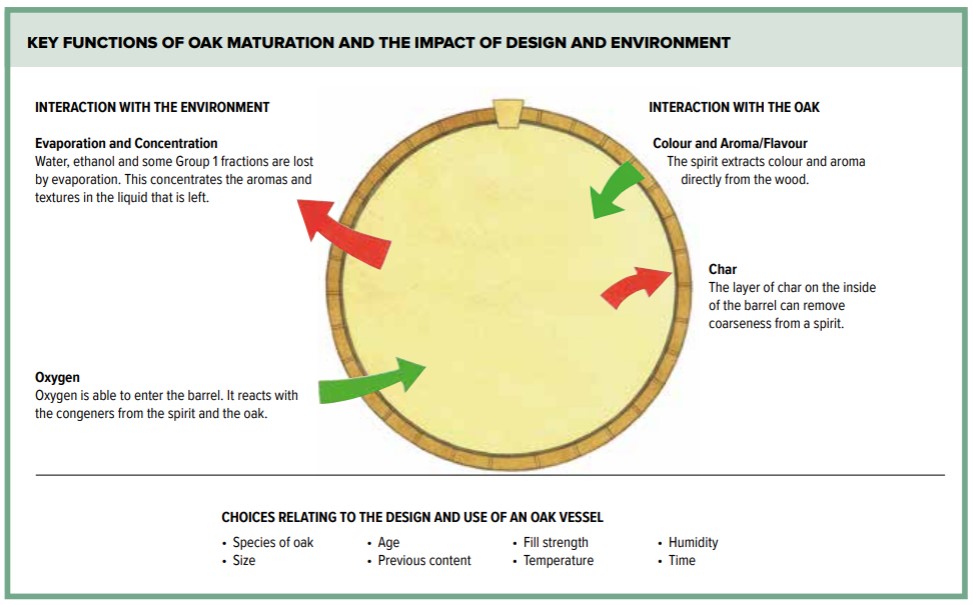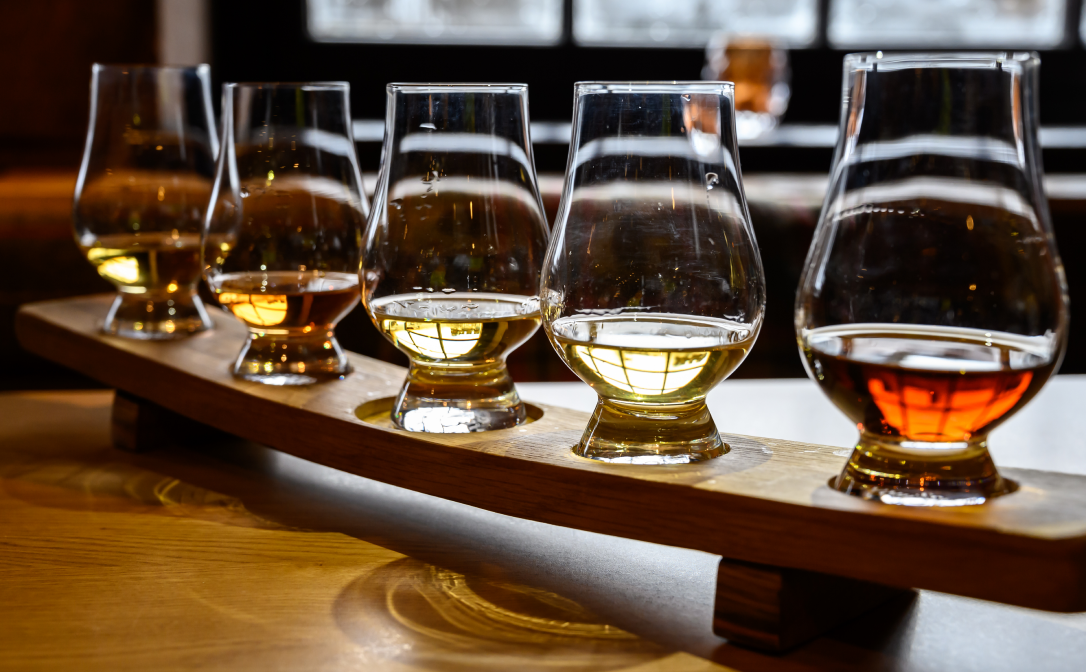Barrel ageing is a critical step in crafting high-quality spirits. It’s also one of the most fascinating topics covered in WSET’s spirits courses, where you can learn how maturation enhances aroma, texture, and even the colour of spirits. Oak barrels do more than simply hold liquid; they can actively transform it, creating the complex flavours and textures we associate with premium spirits. Let’s delve into some of the key facts about how oak works its magic.
If you're ready to deepen your knowledge of spirits even more, it's time to sign up for the WSET Level 3 Award in Spirits.

A glimpse into the textbook for WSET Level 3 Award in Spirits.
Oak adds flavour
Oak is the wood of choice for maturation due to its unique natural properties. Compounds like vanillin (responsible for vanilla notes), lactones (adding coconut and creamy flavours), and tannins (imparting spice and texture) are gradually extracted into the spirit. These elements not only enhance flavour but also contribute to mouthfeel. The process of toasting or charring barrels caramelises the natural sugars in the wood, introducing layers of sweetness and complexity to the final product.
Oxidation refines aroma and texture
Barrels are not airtight, and allow small amounts of oxygen to enter and interact with the spirit. This controlled exposure softens harsh alcohol notes, resulting in a smoother liquid. Oxidation also triggers chemical reactions that create new flavour compounds, such as those responsible for nutty or dried fruit aromas. This gradual development of complexity is essential for producing premium spirits with balanced character.
Climate affects maturation
Where a spirit ages plays a critical role in its flavour profile. Warmer climates, such as Kentucky, can accelerate the interaction between spirit and wood, resulting in bold, robust flavours in a shorter time. Cooler climates, like Scotland, allow for slower maturation, leading to subtler and more nuanced characteristics. Even within a single warehouse, factors like temperature variation and humidity influence how the spirit evolves. For example, barrels on higher shelves in multi-story warehouses experience more dramatic temperature swings, intensifying the ageing process.
Barrel interaction adds colour
Clear, newly distilled spirits gradually take on colour as they interact with oak barrels. The liquid seeps into the wood and flows back out, drawing out compounds that tint the spirit. Over time, the spirit can transition from pale gold to deep amber or brown. The intensity of the colour depends on factors like the type of oak, the level of heat treatment, and the length of ageing. Charring a barrel’s interior intensifies this process, making more pigments available for extraction.

Whisky that has undergone varying periods of oak ageing.
Barrel age and usage impacts flavour
The condition and history of a barrel significantly influence the spirit. New barrels impart the most flavour, contributing strong vanilla, spice, and tannic notes. Reused barrels, on the other hand, provide subtler influences, allowing the spirit’s inherent qualities to shine. Additionally, barrels previously used to age sherry, port, or other wines can introduce unique secondary flavours, such as dried fruit, nuts, or sweet spices, adding layers of complexity.
Beyond the barrel
Barrel ageing is a delicate balance of science and intuition. Every element—from the type of oak to the barrel’s size and the ageing environment—shapes the spirit in profound ways. Whether it’s a smokey whisky, a rich rum, or a smooth Cognac, the influence of the oak barrel is unmistakable.
If this has sparked your curiosity, explore the WSET Level 3 Award in Spirits course to deepen your understanding and appreciation of how these processes work.


